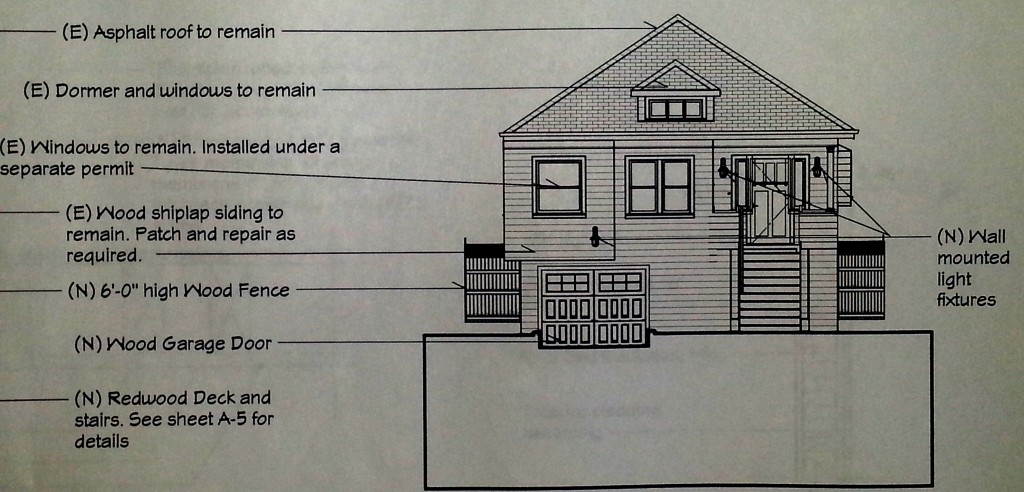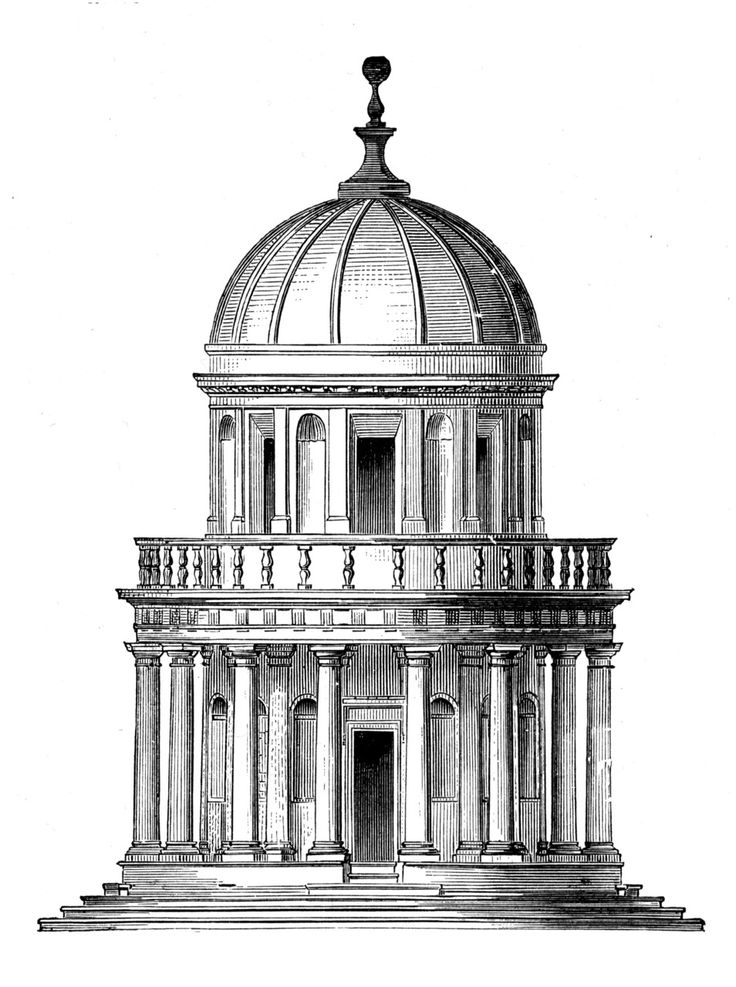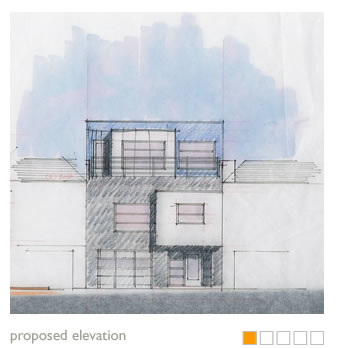October is National Architecture Month, also known in some circles as Archtober. To commemorate the month, I am going to post a brief post every day of the month.
Elevation drawings are related to plan and section drawings. Elevations are 2 dimensional drawings of the outside of the building. They allow architects to study the sizes and scales of the outside of the building. We can look at locations and sizes of doors and windows and the pitch of roofs.

The drawing above is one I did several years ago for a project where we were remodeling an existing Edwardian house. Because of the age of the house, the Planning Department wanted to see how the new doors and windows would look and how we were addressing the use of materials on the outside of the building.

The drawing above is the elevation drawing of the Tempietto, one of my favorite buildings. The actual temple is round, but you can’t actually see the curve of the walls or of the columns, because it is a 2 dimensional drawing. What you can see, however, is the various heights of the parts of the building and how the heights of the ground level, upper level, and dome relate to one another.

Sometimes, architects start getting clever and mix drawings. The drawing above is of the Pantheon. It is half section (left) and half elevation (right). Because the Pantheon is a simple and symmetrical building this particular drawing allows us to see the relationship between the inside and the outside of the building.





